This article was published in the 185th issue of The Universe Space Tech magazine. It was written by Olha Isaieva, PhD in History, historian of science and technology
Ukraine does not formally have any Nobel Prize winners of its own, but this does not mean that Ukrainians are less talented and their contribution to world science is not as significant as that of citizens of the world’s leading countries. Our countrymen have repeatedly received the highest scientific award as representatives of other countries.
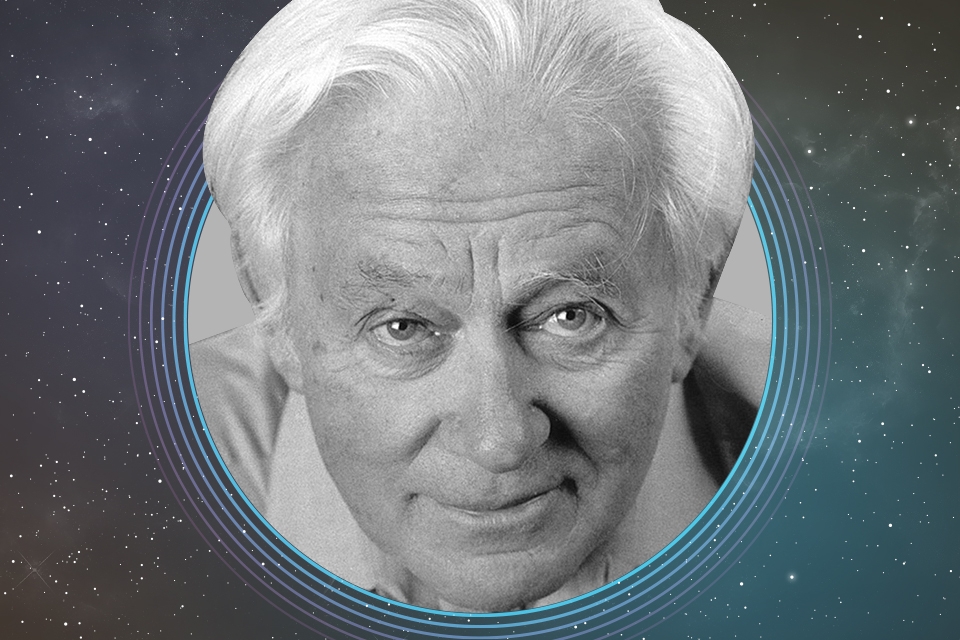
One of the geniuses in science is a brilliant Ukrainian native, George Charpak (1924-2010), a physicist-inventor and experimenter who revolutionised the search for and registration of elementary particles.
Childhood in the Rivne region
The future scientist was born and spent his early childhood in Dubrovytsia town, in Rivne region, which has long been mentioned in of ancient Russian chronicles. Charpak himself called Dubrovytsia “a valley Ukrainian town”. It is interesting that the people of Dubrovytsia keep the memories of George’s peers about playing ball together, childhood adventures and, of course, about his phenomenal abilities and thirst for learning, which led his school teacher to repeatedly talk to his parents, recommending that he be sent to a better school and receive a more in-depth education. Even in his early childhood, the future scientist had to travel a lot: he lived with his family in Palestine for two years, and in his teens he first went to Warsaw, then to France, entered a Parisian communal school, graduated as an external student due to his brilliant mathematical skills, and, full of dreams and hopes, planned further studies.
A moment before the execution
According to George’s own recollections, the Nazi catastrophe of 1939 turned his whole life upside down. During these terrible times, the future scientist repeatedly found himself literally on the verge of death. A Polish Jew by nationality, he suffered the harassment since the first years of the war, and only strong political ties helped his family escape imminent physical destruction. George joined the Resistance Movement, was promoted to the rank of lieutenant in the French Internal Forces, and was later arrested and transferred to the notorious Dachau camp. It was only his command of six foreign languages and a truly fortunate set of circumstances that helped him avoid execution during the massacre of wounded prisoners a few days before the German defeat and the final liberation of the camp. Much later, recalling those events, the scientist joked that he was really risking his life when being driven home in American military trucks with drivers who were completely in love with risk and sport.
Side by side with the stars of nuclear physics
Post-war France needed physicists, so the government did its best to restore the school of theoretical physics in the country, sending the best students for internships to the world’s leading laboratories. That is why George, fascinated by this science, realised the prospects of the industry and decided to change the direction of his education and, while studying to become a civil engineer at the National Higher School of Mines in Paris, began to master physics and continued his studies at the Collège Français.
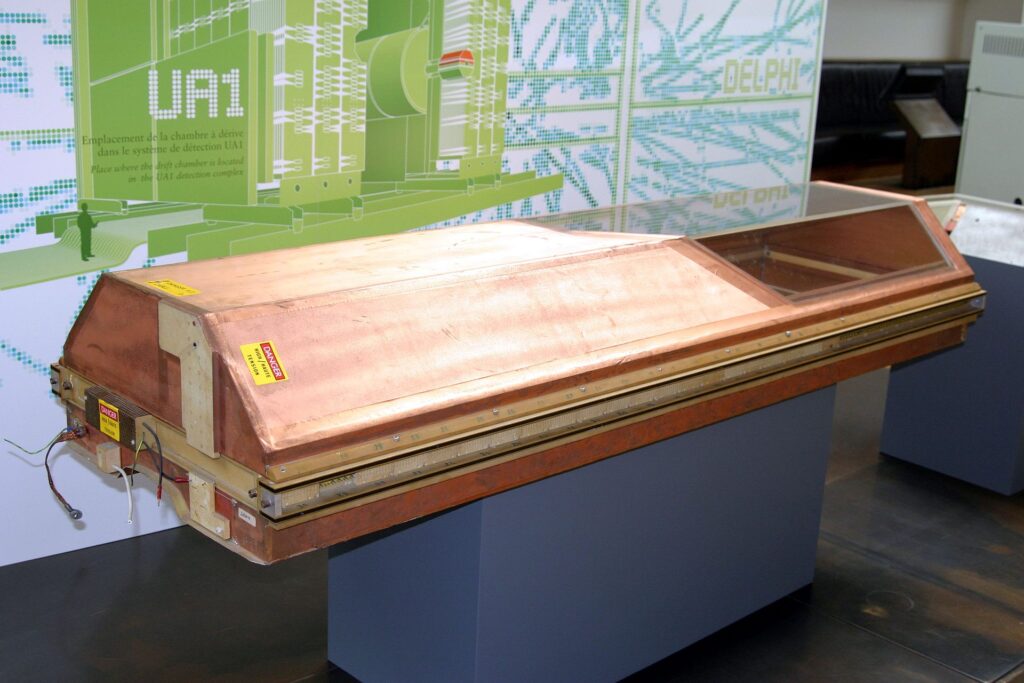
His brilliant knowledge and military background helped him to join the staff of Frédéric Joliot-Curie’s Laboratory of Nuclear Chemistry (Georges studied with the luminary of nuclear physics personally), obtain a doctorate in physics and later, in 1959, thanks to several successful developments, get to the European Centre for Nuclear Research in Geneva (CERN). As a member of an international team of physicists and scientists, George Charpak carried out various studies at the first particle accelerator and found himself in a friendly environment of leading theoretical physicists. In constructive discussions and continuous knowledge exchange, they learned how to create productive multinational teams, sometimes uniting thousands of scientists and engineers who made the most significant discoveries in nuclear physics at that time. The researcher will be leading one of these teams in the near future, a factor he considers crucial to his scientific success. George Charpak’s interests included experiments on nuclear fission and the development of detectors for registering nuclear particles.
An invention with a twist
The rapid progress of particle physics experiments required instruments that would not only register particles as accurately as possible, but also provide rapid analysis of the results of experiments, which would ultimately help scientists understand the deep properties of matter. For example, an unstable elementary particle muon, which is registered in cosmic radiation, can exist for only a few millionths of a second, while the spark camera used at that time in such experiments received only about a hundred images per second. The device developed in 1968 by George Charpak himself solved all the tasks. Later it was called the “Charpak camera” — the same prototype of the ionizing radiation detector that is installed in modern particle accelerators.
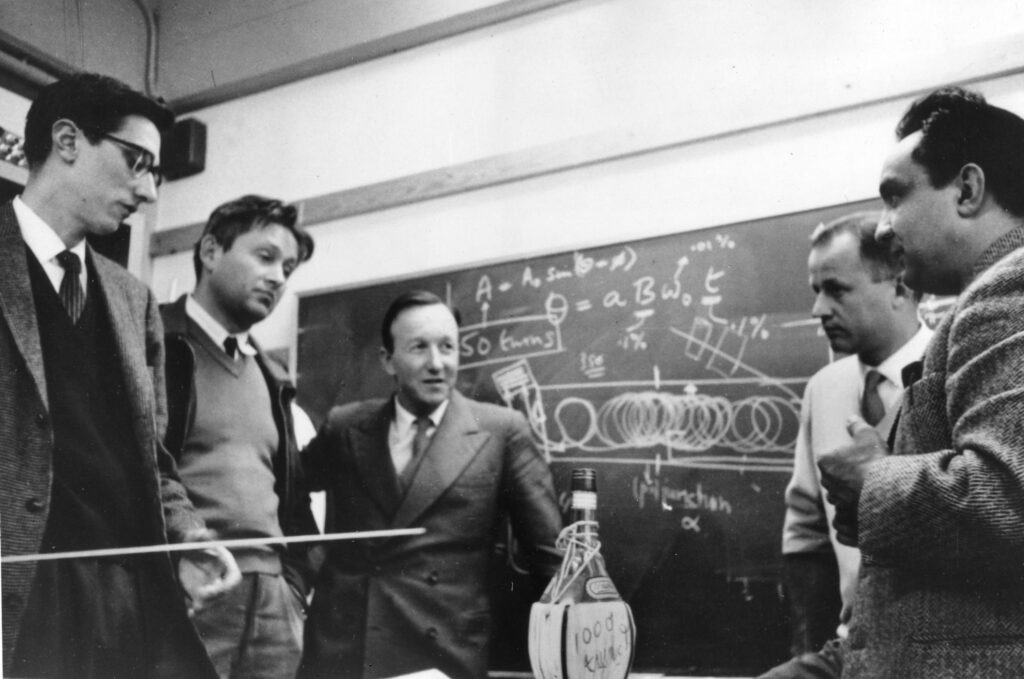
From left to right: Johannes Sens, Georgi Charpak, Francis Farley, Theo Müller, and Antonio Cikiki celebrate the first muon detection using a 6-meter magnet (CERN, 1960). Source: CERN Photo, courtesy of AIP Emilio Segre Visual Archives
Charpak’s idea was ingeniously simple: just assemble a huge number of Geiger frames and remove the interconnections between them. The result of the experiments was a multi-wire proportional chamber (MWPC), which looked like the thickest sieve of thin anode wires arranged in parallel, with a radius of no more than 20 microns. The scientist placed cathode plates at the top and bottom and filled the resulting small structure (only about 10×10 cm) with an inert gas. The high density of the wires made it possible to register a much larger number of particles than previous generations of detectors (for example, S. Powell’s nuclear photoemulsion, Wilson’s chamber, or the bubble chamber of D. Glaser and L. Alvarez). Moreover, each wire functioned independently of the others, and the results of the experiments were accumulated and processed by a computer, so the speed of information collection increased millions of times compared to previous devices! And it was the combination of the detector’s sensitivity and the computer’s speed that became the real highlight of the invention, because until then, the experimenters had to do without cyber assistance and make calculations manually. Charpak’s camera also made it possible not only to study the amount of ionization but also to determine the exact coordinates of particle passage by tracking the paths of ionized gas. In other words, the use of such cameras made it possible to restore the spatial picture of particle traces.
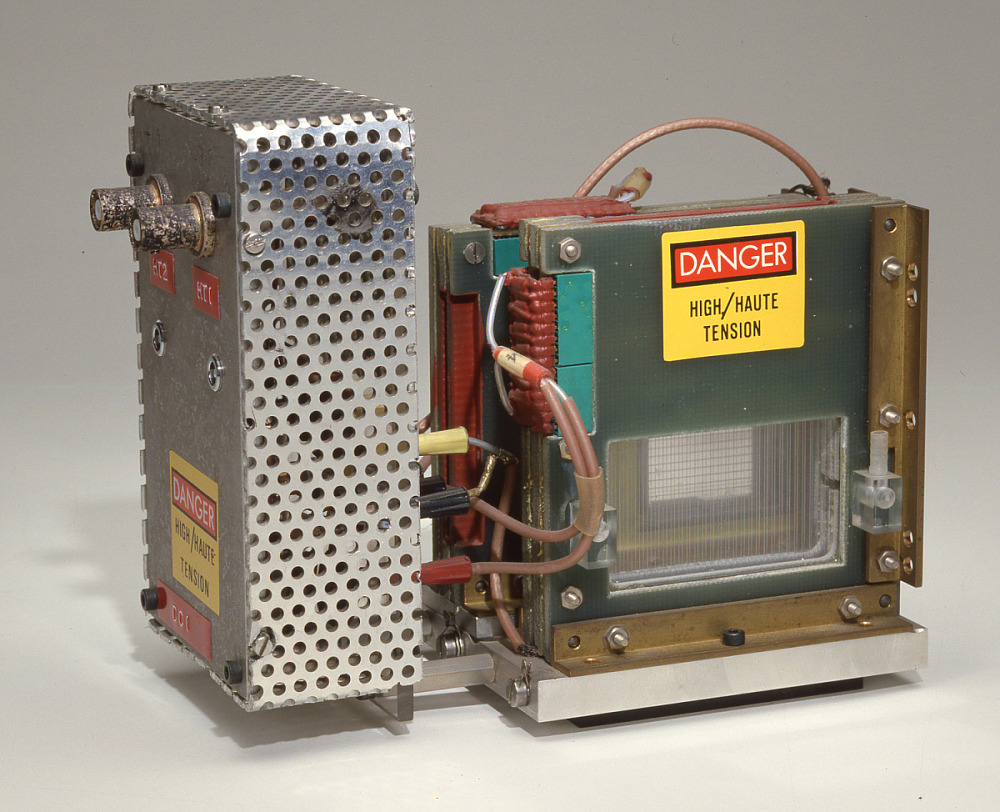
George Charpak personally created the technology for manufacturing the camera, selected materials, improved the key components of the device, and developed computer algorithms for signal processing. The scientist later recalled that the invention was realized precisely because of his stubborn disagreement with the opinion of the majority of CERN employees, who categorically did not believe in the idea of combining equivalent wires in a live gas and predicted that George would resonate all the wires simultaneously when even one particle passed through. However, neither colleagues nor supervisors interfered with the experiments because of their low cost.
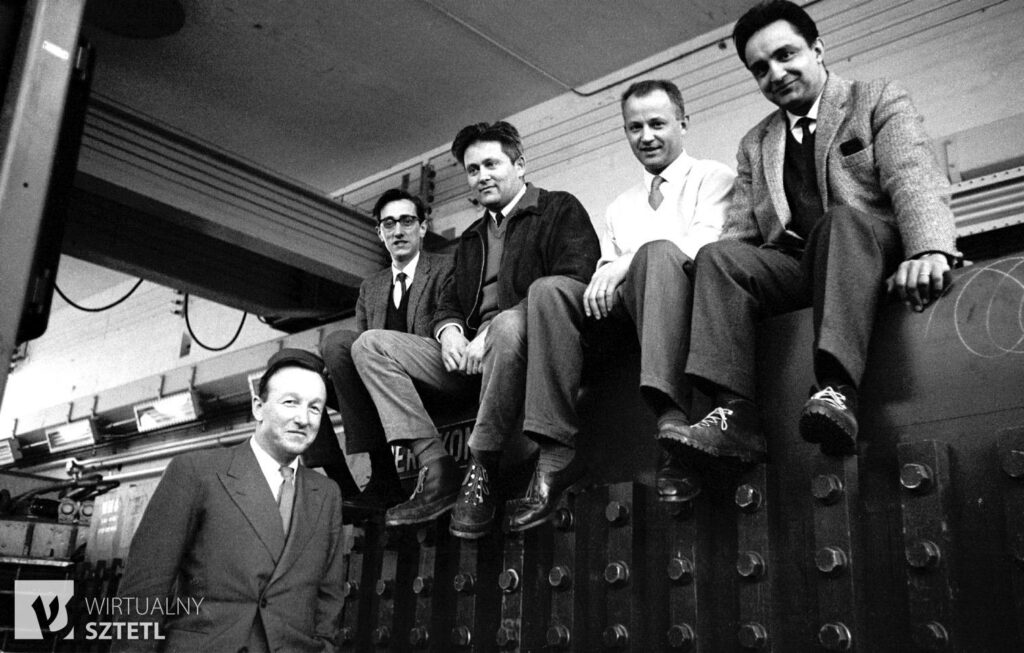
George Charpak’s invention made possible the study of rare particle interactions and complex nuclear reactions. Charpak’s camera played a decisive role in the discovery of the J/ᴪ-particle by B. Richter and S. Ting, intermediate vector bosons by K. Rübbia and S. van der Meer, in proving the existence of the quark, and other high-profile discoveries in the field of neutrino physics. The scientist constantly refined and improved the device, creating more powerful detectors of elementary particle physics phenomena, developed drift and time projection cameras, a multibeam avalanche detector, a gas detector with a solid photocathode, etc.
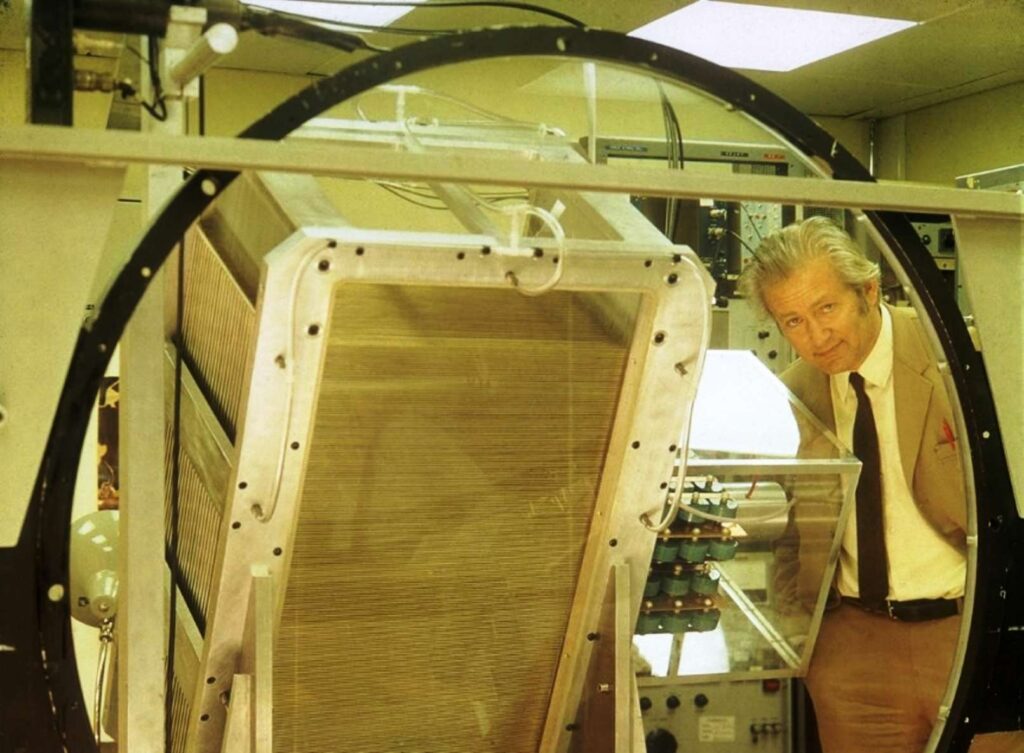
The results of the scientist’s persistent experiments naturally received the highest recognition in world science. In 1992, the Swedish Royal Academy of Sciences awarded George Charpak the Nobel Prize in Physics “for the invention and improvement of particle detectors, in particular the multi-wire proportional camera.” This is confirmed by other honorary scientific awards, such as the CNRS Silver Medal (1960), the Jean Ricard Prize (1973), and the Atomic Energy Commission Prize of the Royal Academy of Sciences (1984).
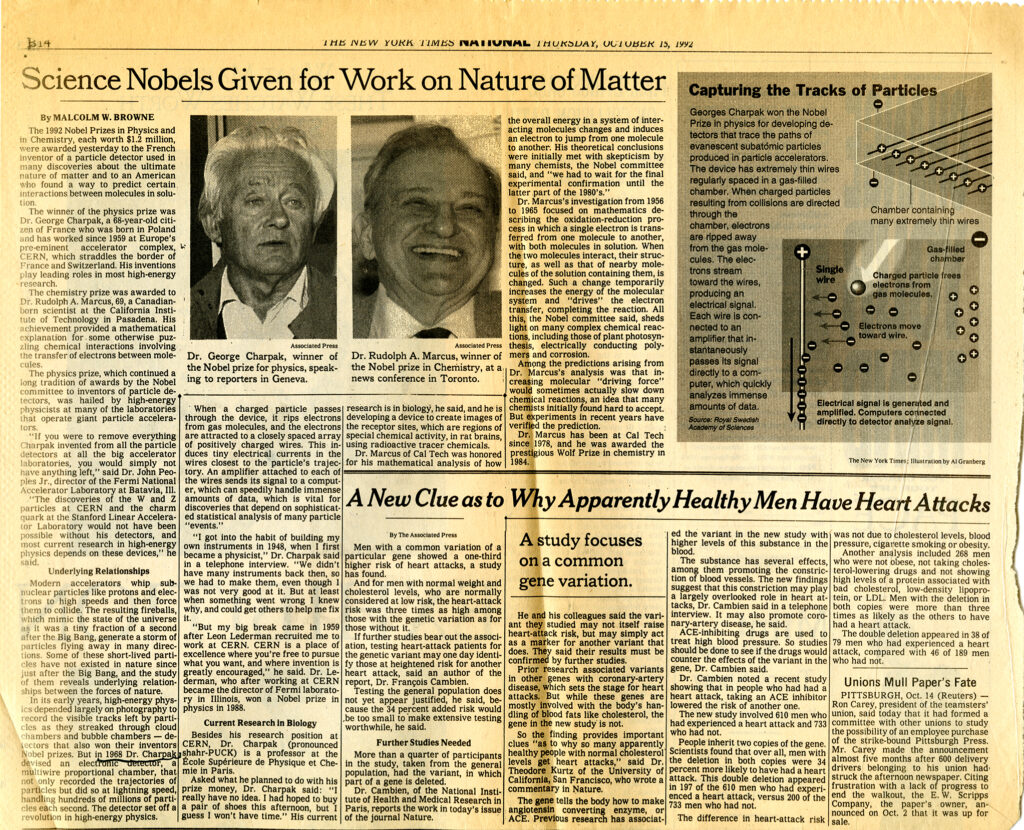
Nowadays, Charpak’s camera is successfully used in medicine, biology and industry; it has helped to improve radiobiological methods of treating cancer, reducing the radiation dose by more than 10 times. The results of the scientist’s experiments are used in seismological equipment, in heart rate recording devices for NASA astronauts, and help to study the structure of DNA. Interestingly, Charpak invested the Nobel Prize money for further scientific investigations.
With Ukraine in his heart
The paths to global recognition for any scientist are largely similar. It is not only deep knowledge and a desire to explore the world that turns an ordinary person into a true scientist. The time of childhood also plays an important role, leaving a bright imprint, filling the soul with the bright colours of first impressions and insight into the distinctive culture of one’s native place. George was very fond of Ukraine, constantly recalling happy moments, friends, good teachers, and his faithful dog. In his memoirs, he acknowledged the great influence of old Ukrainian songs, which were a bright thread through his life. The scientist perceived the memories of Ukrainian folk songs that accompanied workers during work and leisure as a vivid flashback from his childhood, which always illuminated his thoughts and inspired him to work.
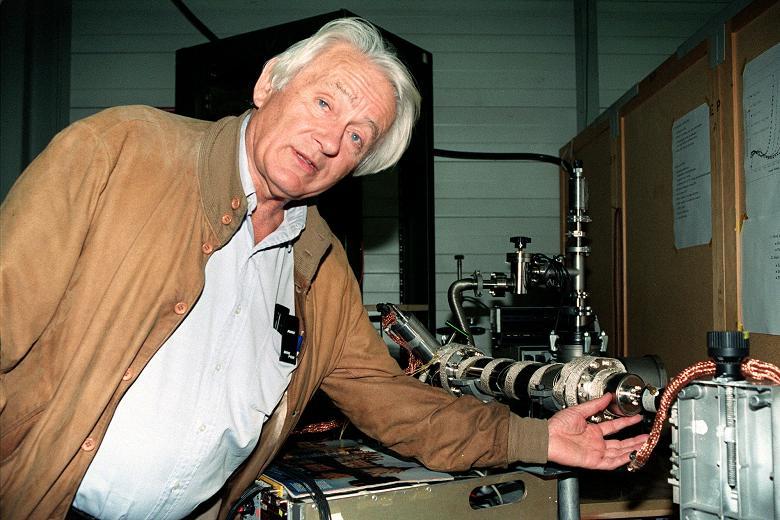
In his correspondence with his fellow countrymen, Heorhii expressed his intention to visit Dubrovytsia, but these plans were never to come true: in September 2010, the scientist died. As if sensing that he would not have to return to his native place, he said in an interview: “When there is no way to get to the Ukrainian territory, I call Ukraine to me. And it comes every time — from my own heart”. Thus, the scientist considered himself a true Ukrainian by birth and by the call of his soul.
George Charpak took the Chornobyl tragedy personally and offered to help diagnose and treat radiation sickness. However, the Soviet authorities’ decision to hush up the tragedy at all costs prevented such long-awaited help for thousands of victims. Therefore, it is not surprising that George has been vocal in the press about how, after Chernobyl, those who claim that safety systems are flawless and that people can fully control nuclear reactions should be despised.
Until the end of his life, the researcher, who had already become a full member of many academies of sciences around the world, conducted active educational work in ordinary schools, encouraging children to study the science, sought harmony in science, adding a touch of creativity and humour to experiments, and was an active opponent of nuclear proliferation.

